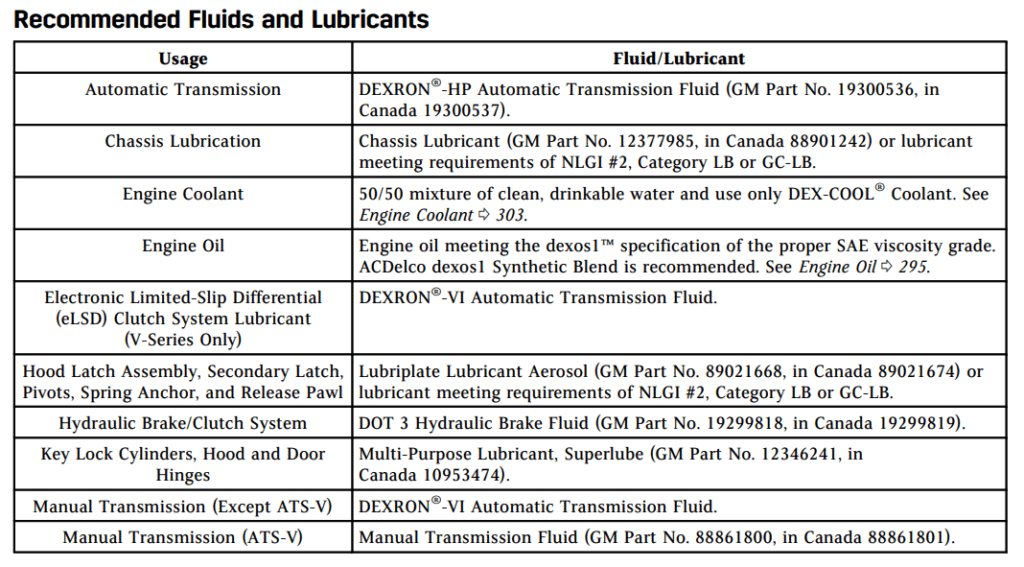The Cadillac ATS is a series of compact executive 4-door sedans and 2-door coupés manufactured by the renowned American automaker, Cadillac. Introduced in 2012 as a 2013 model, the ATS was designed to compete with other luxury compact cars in the market, particularly those from Europe, like the BMW 3 Series and Mercedes-Benz C-Class.
Sporting a bold and stylish design complemented by advanced features, the Cadillac ATS has managed to carve its own identity in the luxury car segment. The car boasts excellent handling and performance, attributed to its lightweight, well-engineered suspension, and powerful engine options ranging from efficient four-cylinders to high-performing V6s.

Generational Differences in Cadillac ATS
The Cadillac ATS, known for its impressive style and performance, has seen two significant generational shifts since its launch. Each generation has brought its unique flavor to the table while ensuring that the car stays true to its core principles.
The First Generation (2013–2018):
Introduced in 2012 for the 2013 model year, the first-generation Cadillac ATS came as a fresh breeze in the compact luxury segment. It was designed to compete directly with established European rivals like the BMW 3 Series, Audi A4, and Mercedes-Benz C-Class.
This generation offered a variety of powertrains, including a 2.5L inline-4, a 2.0L turbocharged inline-4, and a 3.6L V6 engine. In 2016, the high-performance ATS-V model was introduced, boasting a 3.6L twin-turbo V6 engine. These cars primarily featured 6-speed automatic transmissions, although a 6-speed manual was available for some models.
The first-generation ATS received a mid-cycle refresh for the 2015 model year, which included a new front fascia, upgraded interior materials, and technological improvements, including the introduction of 4G LTE connectivity and a Wi-Fi hotspot.
Transmission Fluid Type & Capacity
The transmission fluid plays a vital role in the smooth functioning of your vehicle’s transmission system. It acts as a lubricant for all the moving parts within the transmission, reducing friction, and thus wear and tear. It also serves as a coolant to prevent the transmission from overheating.
Therefore, using the right type of transmission fluid and maintaining the correct capacity is crucial for your car’s longevity.

For the first-generation Cadillac ATS (2013–2018), the manufacturer-recommended transmission fluid type is the Dexron VI. This type of automatic transmission fluid (ATF) is a high-quality, synthetic-based fluid that provides superior friction durability, and stability, enhancing the transmission’s performance and longevity.
Regarding the transmission fluid capacity, it’s important to note that it varies depending on the specific model and the transmission system used. Generally, the 6-speed automatic transmission in the first-generation ATS holds approximately 9.5 quarts of fluid.
| Gearbox | Fluid capacity | Fluid type |
|---|---|---|
| 8-speed automatic | Total Fill 11.5 quarts – with cooler Total Fill 10.9 quarts – without cooler 7.4 quarts – initial fill | DEXRON-HP |
| 6-speed automatic | 10.9 quarts – total fill 6.4 quarts – initial fill | DEXRON-VI |
However, it’s advisable to refer to your vehicle owner’s manual or consult a professional mechanic to confirm the precise fluid capacity for your specific model and transmission.
Please remember that using the wrong type of transmission fluid or maintaining incorrect fluid levels can lead to serious transmission problems and may result in costly repairs. So, always ensure you’re using the recommended fluid and maintaining the proper fluid level for the best performance and longevity of your Cadillac ATS.
Why Is Transmission Fluid Change Important?
The transmission fluid in your vehicle serves several vital roles, each contributing to the smooth functioning and longevity of your vehicle’s transmission system. It acts as a lubricant for the moving parts, a coolant to prevent overheating, and a conduit for power in automatic transmissions. Here’s why regularly changing the transmission fluid is so important:
- Lubrication: The primary role of transmission fluid is to lubricate the moving parts within the transmission. This reduces friction, which in turn minimizes wear and tear, thus prolonging the life of your transmission.
- Prevent Overheating: The transmission fluid helps cool the transmission by carrying away heat generated by friction and operation. Over time, due to regular use, the fluid can degrade and lose its ability to effectively cool the transmission, which can lead to overheating and eventual damage.
- Preserve Transmission Performance: Clean, new transmission fluid ensures optimal hydraulic pressure, necessary for gear shifts in automatic transmissions. Old, degraded fluid can reduce the efficiency of this process, leading to poor shift quality and transmission performance.
- Remove Contaminants: Over time, small bits of metal and other contaminants can build up in the transmission fluid. Regular fluid changes will remove these contaminants, preventing damage to the transmission.
- Cost-Effective Maintenance: Regularly changing your transmission fluid is a cost-effective way to maintain your vehicle. While there is a cost associated with the service, it’s far less expensive than replacing or rebuilding a transmission that’s been damaged due to neglect.
Given these benefits, it’s clear why changing the transmission fluid regularly is essential for the overall health and performance of your vehicle’s transmission. Always refer to the manufacturer’s guidelines for the appropriate change intervals and remember to use the recommended type of transmission fluid for your specific vehicle.
How Often to Change Transmission Fluid in Cadillac ATS
The optimal frequency for changing the transmission fluid in your Cadillac ATS largely depends on the driving conditions and the type of transmission your vehicle has. As per the manufacturer’s guidelines, it’s generally recommended to change the transmission fluid every 45,000 to 60,000 miles under normal driving conditions.
However, if your vehicle often operates under more severe conditions – such as frequent stop-and-go traffic, heavy towing, or in extremely hot climates – you may need to change the fluid more frequently, potentially every 30,000 miles.
It’s also important to regularly check the transmission fluid level and its condition. If the fluid level is low or the fluid is dark, dirty, or has a burnt smell, it may need to be changed sooner. Your vehicle’s owner’s manual can provide specific instructions for checking the fluid.
Costs Involved in Changing Transmission Fluid
The cost of changing the transmission fluid can vary depending on several factors, including your location, whether you go to a dealership or an independent mechanic, and the specific services provided.
On average, for a Cadillac ATS, you can expect to pay between $150 and $200 for a transmission fluid change. This estimate includes labor costs typically ranging from $80 to $100, while the parts – mainly the new transmission fluid – are priced between $70 and $100.
Keep in mind that while this is a routine maintenance expense, regular transmission fluid changes can prevent more serious and costly transmission problems down the line, thus saving you money in the long run. Regular maintenance, including fluid changes, is key to keeping your Cadillac ATS running smoothly and efficiently.
Tips for Maintaining Your Cadillac ATS Transmission
Keeping the transmission of your Cadillac ATS in optimal condition is vital for the longevity and performance of your vehicle. Here are some useful tips to help you maintain your ATS transmission:
- Regular Fluid Checks: Keep a regular check on the transmission fluid. The fluid should be at the appropriate level and should be clean, not dark or dirty. Any signs of metal or dirt particles are indicators of potential transmission issues.
- Fluid Changes: As discussed earlier, regular transmission fluid changes are crucial. Stick to the manufacturer’s recommended intervals, and remember, if your vehicle is often driven under more severe conditions, you may need to change the fluid more frequently.
- Watch Out for Leaks: If you notice spots or puddles under your parked car, it may be a sign of a fluid leak. An unusually low fluid level may also indicate a leak. If you suspect a leak, take your car to a professional mechanic as soon as possible.
- Listen for Unusual Noises: Pay attention to your vehicle’s sounds. If you hear unusual noises, like humming, clunking, or whining when the car is in gear, it could be a sign of transmission issues.
- Observe Shift Patterns: Keep an eye on how your car shifts gears. If you notice any irregularities like slipping gears, rough shifts, or delays in engagement, your transmission may need attention.
Conclusion
Caring for your Cadillac ATS’s transmission system can significantly improve the lifespan and performance of your vehicle. Regular maintenance, such as using the correct transmission fluid type, maintaining the right fluid levels, and changing the fluid at the recommended intervals, can prevent costly repairs and ensure a smoother and safer driving experience.
Understanding your car’s needs and proactively addressing them will make your journey as a Cadillac ATS owner a rewarding one. Drive safely!















